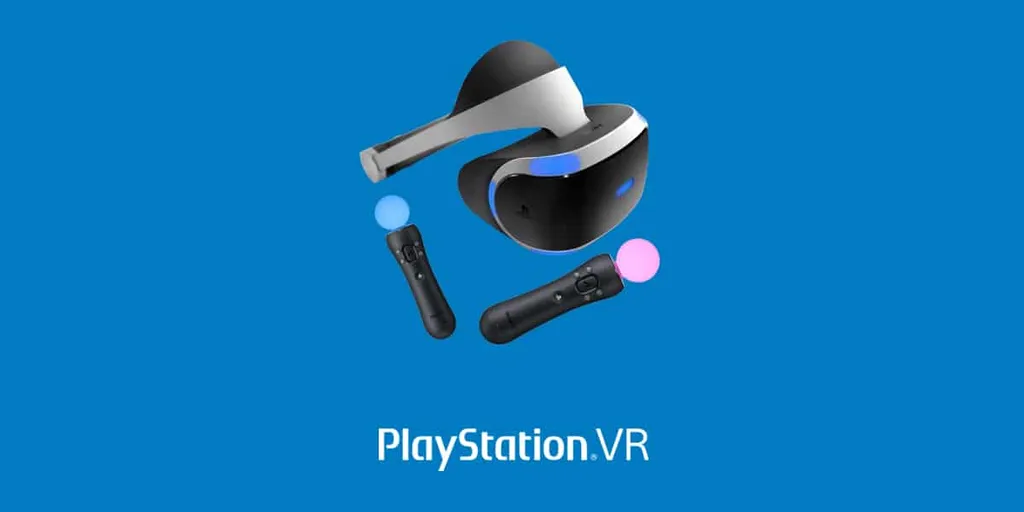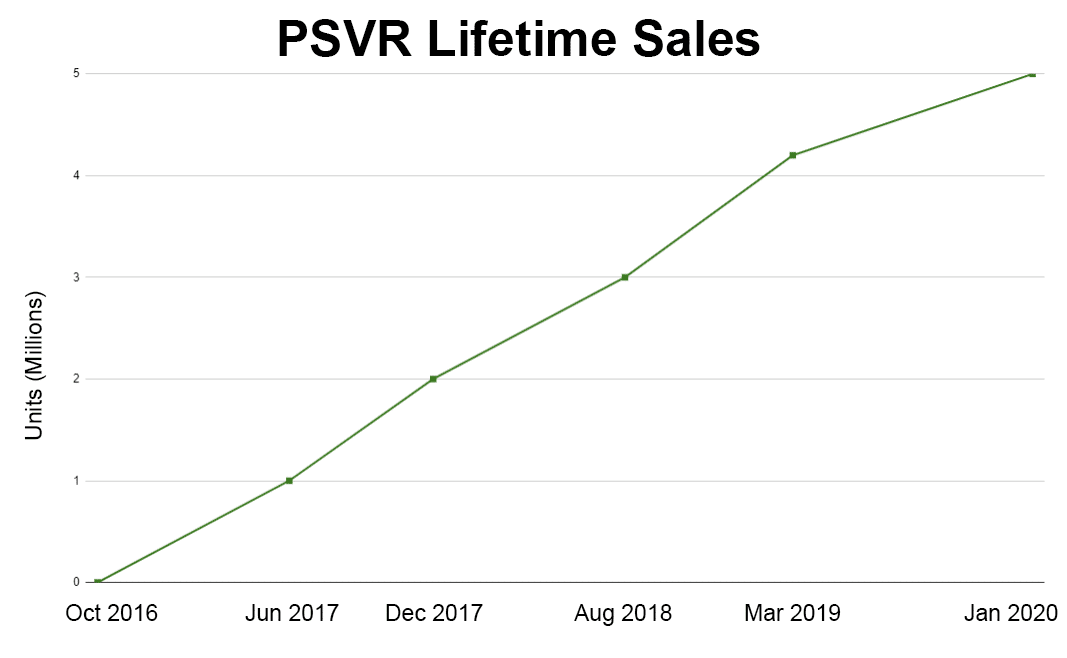Last night at CES 2020 in Las Vegas, Sony provided its fifth update on PSVR sales. The headset, which is powered by the PS4 console, has now crossed the 5 million milestone. With these latest figures fresh off the boat, let’s do a little PSVR sales analysis, shall we?
That number pales in comparison to the 106 million PS4s sold, but for the fledgling VR industry this is thought to be probably the largest install base of any one headset (though Oculus, HTC and Valve don’t provide sales stats). Samsung’s Gear VR had shipped 5 million units by CES 2017, but many of these were given away for free and the platform — and the wider phone-powered VR scene — is now all but dead.
Reason To Celebrate?
But is the 5 million mark actually that positive a sign for PSVR? On the surface, it may seem so, but there are some crucial facts to consider. Yesterday’s news, for example, marked the end of the longest gap Sony has provided between sales stats (10 months, to be precise) and yet it was also the smallest number of units sold between headlines too. For reference, below is every sales update Sony has provided since launch, including dates and timeframes.
PSVR Sales Analysis
October 13th 2016 – June 5th 2017, 1 Million (1 million in just under 8 months)
June 5th – December 7th 2017 – 2 Million (1 million in just over 6 months)
December 7th 2017 – August 16th 2018 – 3 Million (1 million in just over 8 months)
August 16th 2018 – March 25th 2019 – 4.2 Million (1.2 million in just over 7 months)
March 25th 2019 – January 6th 2020 – 5 Million (0.8 million in just under 10 months)
From this data, it definitely looks like PSVR peaked in the mid 2018 – early 2019 phase. Indeed, if you recall this era in the headset’s life, it really seemed to be coming into its stride. Firewall: Zero Hour, Beat Saber and Astro Bot all released in this window and prices for the kit started to tumble. So strong was the headset’s momentum that we even definitively claimed that you should buy a PSVR over the 2018 Black Friday period.
PS4/PSVR Sales Are Slowing At The End Of Their Life
There are a number of potential factors attributing to the perceived decline of sales since this era, though, some entirely natural and a few more that are a little more concerning. For starters, it’s no secret that PS4 is reaching the end of its lifecycle, set to be replaced by PS5 by the end of the year. It’s natural for console sales to be slower in this time and, by extension, the peripherals for those consoles to slow too. According to company-issued milestones, Sony sold less PS4s in 2019 (14.4 million) than it did in 2018 (around 18 million). Expecting the PSVR to sell more when its own console sales are slowing is unrealistic. Not to mention that we’re expecting a PSVR2 to release on PS5 at some point.
Fresh Competition As PSVR Shows Its Age
PSVR also finally welcomed some much-needed competition in 2019 with the launch of Oculus Quest. Quest is a standalone headset with no wires and 360 degrees of tracking, plus it has better visual clarity than PSVR, all for $399. For around the same price with a PS4 included, PSVR sports a dated 180 degree tracking system (you can move your head in 360 degrees but not your fans), blurrier visuals and you have to clutter your room with a camera and wires. If you already have a PS4 an argument can be made for getting a PSVR instead of a Quest but, if you’re coming in fresh, Facebook’s headset is unquestionably the better deal.
Lack Of Content
There was a time in which Oculus Rift and HTC Vive owners looked on in envy as PSVR enjoyed games like Resident Evil 7, Firewall and Astro Bot. But there’s no denying that PSVR’s release schedule has slowed significantly since that heyday. Sony London’s Blood & Truth was possibly the only Sony-published game released on the platform in 2019 and you could count the other truly notable releases — including No Man’s Sky and Ghost Giant — on one hand. Going into 2020, things look slower still with Iron Man VR, After The Fall and some Walking Dead shooters standing out as the only AAA titles in a sea of otherwise promising indie releases.
Coming Out Of Beta
Should slumping sales cause concern, though? Not really; we already anticipated that 2020 would require a lot of patience on the PSVR front. In many ways, the first PSVR was little more than an experiment for Sony; it didn’t even get a native UI on PS4 and none of the company’s biggest developers — Naughty Dog, Sucker Punch and the like — released titles for it. With the promise of upgraded visuals, more horsepower, improved tracking and better controllers, PSVR2 offers a fresh start for the PlayStation VR story, one which will hopefully end with many, many more millions sold.
—
Do you agree with our PSVR sales analysis? Let us know in the comments below!



























